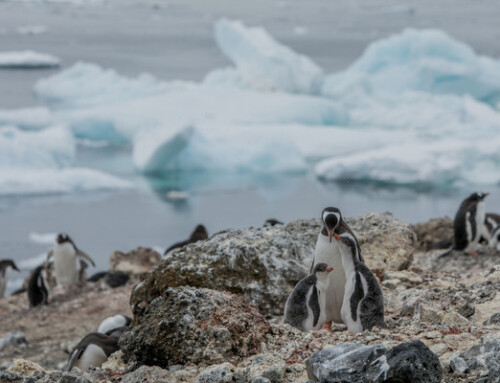A Dutch study indicates that the effect of human disturbance on the carrying capacity of individual feeding sites can be reliably estimated.
Natural areas are under increasing pressure from climate change, human disturbance, habitat degradation and fragmentation, and there is a growing need to set conservation priorities.
The rate of loss of wetlands is accelerating all over the world, threatening the existence of inevitable stopover sites of migratory waterbirds. The most basic way to judge the value of a stopover site for a migratory bird species is measuring the amount of food present. However, it is well acknowledged that foragers do not consume all available food, but only until a certain ‘giving-up density-, a density below which searching for and consuming the food left over is not profitable any more. The giving-up density is often assumed to be the same everywhere on a site, as it has to do with the profitability of the amount of food left over. Therefore, this measure is also thought to be a useful measure of the effect of human disturbance: animals leave more food behind when they do not dare to use an area to its full value due to human disturbance. This way the carrying capacity of a site is lowered by disturbance.
In heterogeneous environments, however, giving-up density might also vary for other reasons than human disturbance. For example, the accessibility of food can be locally different (for instance at certain places partly out of reach of animals), as well as the costs of foraging (being for example at certain places more difficult to harvest), both having an effect on the giving-up density. Nevertheless, all these factors (the amount of available food, the accessibility, the harvest rate and the costs of foraging) can be combined into one single measure, the so-called ‘net energy intake rate-. As this measure corrects for all local differences, it might give a more reliable idea on the quitting point below which foraging is no longer profitable. Therefore, it might also be more useful to detect the effect of human disturbance on habitat use of animals than giving-up density.
In our study, we tested this idea by focusing on Bewick’s Swans Cygnus bewickii foraging on tubers of fennel pondweed Potamogeton pectinatus in the Lauwersmeer, the Netherlands. When comparing the giving-up densities left behind after the swans had left the lake in disturbed and undisturbed areas no significant difference could be revealed. However, the currency of net energy intake rate provided evidence that swans exploit human-disturbed parts to a lower extent. Therefore, we could conclude that the effect of human disturbance on the carrying capacity of a site can in heterogeneous environments be more reliably estimated by net energy intake rate than giving-up densities.
Related items
- Human disturbance of Bewick’s Swans is reflected in giving-up net energy intake rate, but not in giving-up food density. ABEL GYIMESI, MARYCHA S. FRANKEN NICOLE FEIGE & BART A. NOLET. View
- The study area – Nationaal Park Lauwersmeer View
- Netherlands Institute for Ecology View
- About Abel Gyimesi View
Image credit: Bewick’s Swan © Bart van Lith
Blog with #theBOUblog
If you want to write about your research in #theBOUblog, then please see here.





